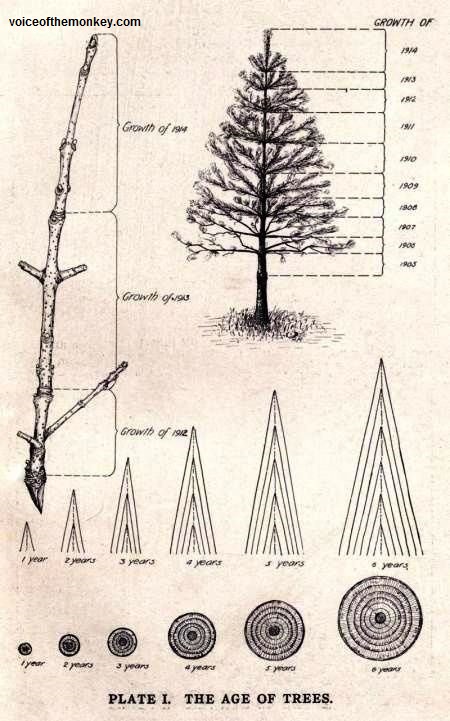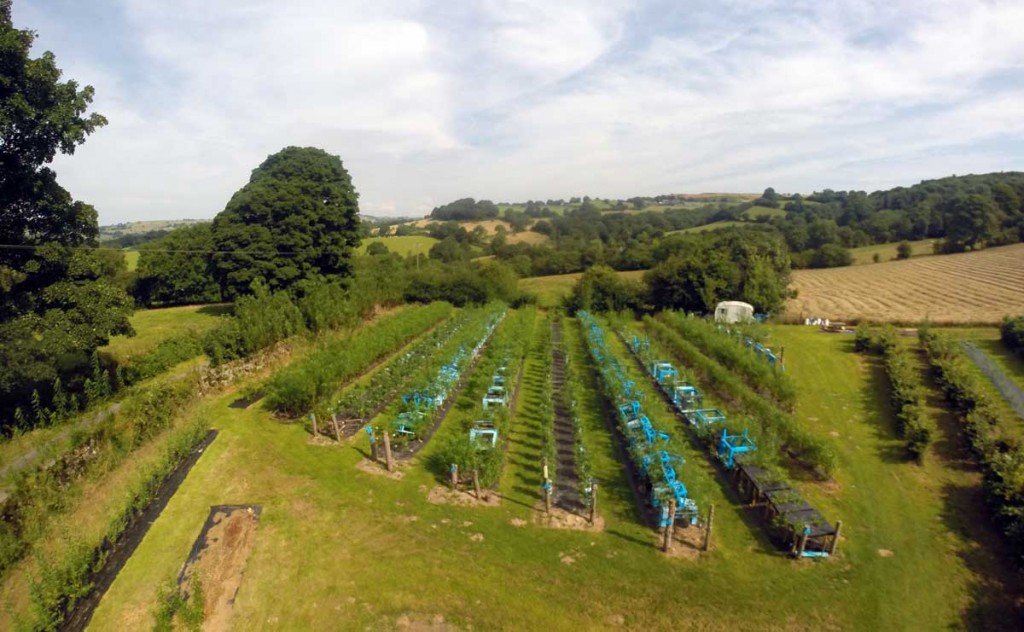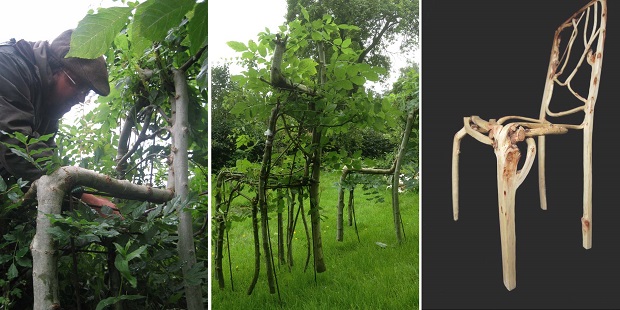Across time, wood has been used for building and making all kinds of objects. No matter whether you want to build a home, make eating utensils, or make boxes to store items away, carpentry is a very important skill to have in these times as well as after a major crisis.
Aside from knowing how fashion wood into various objects and shapes, you need to know how to select the best wood for each application.
Knowing how to select wood is also very important when it comes to choosing the best trees for a survival orchard that will sustain building and other carpentry needs. Here are 9 tips to follow so you could make the best choice!
Know Your Building and Design Plans
Before you begin looking for the best trees or pre-cut lumber, you need to know exactly what you want to build. Here are just a few types of carpentry that will require different kinds of wood. In each case, even though other woods might be viewed as better, they are actually not the best for the application in question:
- Eating and cooking utensils are best made from pear wood. Even though this wood rarely gets listed as an important wood for carpentry, it does not warp or rot easily. In addition, pear wood also does not leave behind as much taste as other woods that may be useful for making eating utensils.
- Musical instruments, toys, prototypes, and furniture can be made from many different kinds of wood including mahogany, oak, cedar, ash, and birch. The wood you choose will be as dependent on stylistic concerns as on durability. For example, if you are going to make a wooden rocking chair, you might want to use a wood with a particular grain pattern for the visible parts even though it may not be as durable.
- Wood for housing construction will also vary considerably based on the size of the building and the part that you are working on. In this case, you might choose pine or other softwoods for some parts, and then use oak for flooring or other areas for the sake of durability or grain pattern.
Hardwood vs. Softwood
While each wood type may have its own strengths and weaknesses, you can estimate useful substitutes if you know whether you are dealing with “softwood” or “hardwood”. Before, during, and after a crisis, it may not always be possible to get the exact kind of wood that you are looking for.
Softwood refers to wood that comes from trees that essentially have needles instead of conventional leaves. Since these trees tend to grow very fast and are some of the first trees to start a new forest, they are also the most commonly used for building and carpentry needs. Even though softwoods are very common, they do not have the grain texture or coloring that you will find in hardwoods.
Softwood trees produce wood that is just as dense as the most common hardwood trees. Their wood is also just as durable as what you would find in hardwood trees. Before searching for hardwood trees, you should know how the names of trees based on their needle shape and grouping as well as what their seed cones look like. This will help you determine which woods are denser than others so that you have a better chance of getting the right wood for your application.
When it comes to elements of style and beautiful grains for furniture, most of your choices will focus on hardwood trees. You can easily spot these trees in a forest because they have conventional leaves. If you happen to be searching for hardwood trees during the late fall, winter, or early spring months, you will need to be able to recognize bark patterns, bud patterns on the branches, and other growth characteristics.
As with softwoods, you will find that different species of hardwood trees have wood that varies in density. Once you know how dense the wood needs to be for each part of your carpentry project, you will have a much easier time narrowing the remainder of the field on wood grain.
Tree Age and Carpentry Choices
It is not always easy to say how old a tree should be before it produces wood that can be used for carpentry. For example, even though softwood trees grow the fastest, some stands of trees may have experienced a drought for several years. As a result, if you think you can get good wood from them in 5- 10 years, you may wind up being very disappointed.
Not only will the trunk be too small, there are also apt to be other problems with the wood related to the lack of water while the tree was growing. From that perspective, there is no “earliest” age range that you can start cutting down trees earmarked for use in carpentry projects.
It is also will be of no use to simply go out and cut down the oldest and biggest trees. As trees age and expand their trunk, there also comes a point where the tree will not expand further. At that point, the outer levels of the wooden rings will actually begin to decompose. Wood from trees that are too old will rot faster and will also not be as strong as wood from trees that are near the end or have just ended their active growth stage.
When it comes to considering age of a tree when selecting wood for carpentry, you should start off by having a good idea about how large each species of tree should be under optimal conditions.
 As you look at the trees in your area, you can gauge their approximate age by the condition of the bark and perhaps taking a small core sample if the tree is large enough to withstand it. From there, you can gauge the tree size and determine if it is comparable to trees of the same age growing in optimal conditions. If the tree is too small or too large for its age, then it may not be the best choice for your project.
As you look at the trees in your area, you can gauge their approximate age by the condition of the bark and perhaps taking a small core sample if the tree is large enough to withstand it. From there, you can gauge the tree size and determine if it is comparable to trees of the same age growing in optimal conditions. If the tree is too small or too large for its age, then it may not be the best choice for your project.
What Is the Best Part of the Tree
Surprisingly enough, you may not always need to use the trunk of the tree for your carpentry needs. For example, if you intend to make cooking or eating utensils, then a large branch might suit your needs.
If you need larger amounts of wood from the trunk, there are some places that are better than others. Use the following guidelines to help you determine where the best wood is within the trunk. If you are looking for large amounts and do not need the absolute best quality, you can also use these guidelines to help you get the most from each trunk:
- After you cut down a tree, look carefully at the area that has been cut. You will be using the ring pattern to help determine where the best wood is as well as how to cut boards from the trunk in order to get the best wood or the largest number of boards from the trunk. During this process, always remember that wood will expand as it picks up moisture and then contract as it releases it. This expansion and contraction goes from the center of the trunk outward to the bark. If you have rings that are going in different directions in a single board, it will not expand and contract evenly. Over time, this will cause the board to warp, buckle, and fall apart.
- The worst quality boards, but largest amount of usable wood will come from boards that simply cut the trunk into flat sections, or a “flat swan cut”. These include sections that go through the center of the trunk all the way out to the bark. Since the rings are pulling and pushing in opposite directions, the board itself will not be as durable over time. There are three patterns that will reveal you are looking at wood that has been milled in this manner:
- 1. the wood has bow shaped tree rings on the cut ends,
- 2. the curvature of the tree rings on one side points inward in relation to the rings on the other side of one end of the board,
- 3. you can see the core of the tree trunk in the center of the board end or nearby.
- Better quality boards are made with a Riven cut. When you look at the cut ends of these boards, the tree rings only curve in one direction. Even if you see some of the tree core, it will be all the way one side of the board. Since these boards are cut at angles and do not go all the way through the diameter of the trunk, they usually have less width than flat swan cuts. Over time, as these boards absorb and release moisture, they will be less inclined to buckle or crack because the ring pattern is stable across the entire board.
- There are also variants of the flat swan cut that only use part of the trunk. Pay careful attention to the angle of the rings in relation to the board. The best wood boards will have a 60 – 90 degree angle to the rings.
There Are Things to Avoid
Aside from avoiding wood that hasn’t been cut properly to suit your needs, there are some other things that will either weaken the wood or prevent you from creating something that is appealing and beautiful. Here are the main things you should consider no matter whether you are cutting wood or purchasing pre-cut lumber:
Knots
When selecting a tree to use for carpentry wood, always bear in mind that areas where limbs broke off will have scar tissue in the form of knots. In addition, if the tree bark was damaged in some way, that will also form scar tissue that will heal over with time. Depending on the age of the tree and when the damage occurred, you may not even know this second type of knot exists until you cut the tree down. At the very least, you should always look at the health of the current bark on the tree and also surrounding trees. If you see signs of animals chewing on the bark or other issues, then you might want to choose a healthier stand of trees.
Bark
Aside from the fact that bark has no weight bearing strength, once you cut it away the board will be uneven, or you will wind up with a much narrower board. If you are going to cut a tree down, make sure that you take into account the thickness of the bark in relation to the size boards that you need and the diameter of the tree.
No matter whether you are choosing trees to cut or pre-cut boards, always avoid wood that shows signs of insects or other animals boring into it. Any small holes or signs of chewing can mean the wood has been seriously compromised, or worse yet, might contain eggs for insects that will destroy any other wood that is part of any item that you build.
If you are looking at pre-cut boards always avoid ones that have already buckled, warped, or cracked. You should also look form one end of the board to the other to make sure that one end isn’t twisting in relation to the other. Finally, make sure that the boards are straight on all four sides.
Wood Aging and Drying
Before you can use wood for building, carving, or making furniture, it must have time to dry out. While pre-cut lumber may already be dry enough to work with, it is still very important to know how much moisture is in the wood so that you know if it needs to adjust more before you start working with it.
If possible, compare the moisture in the wood to the area where the wood will be used. It may take weeks, or even months before the wood and the environment are synchronized. Once that stage is reached, remember that increased dampness will still affect the wood and cause expansion in relation to the rings.
Special Treatment Considerations
When you visit a lumber yard, you will find that there are three types of wood to choose from:
- Naturally dried wood – this is wood that has been set aside to dry without adding nay sealants, preservatives or other treatments. As a prepper, this is more than likely the method that you will use to dry wood after cutting down trees.
- Kiln dried wood – the drying process for this wood is accelerated by placing the wood in a hot oven so that it dries faster. Even though this wood may be ready to use faster, it is still going to absorb and release moisture over time. Therefore, even if a board looks straight or does not have any signs of warpage, it may still still buckle, bend, or crack when used. As with any other wood, it will still be to your advantage to let this wood sit for a few weeks or months in the area where you will be using so that you can gauge its expansion, contraction, and other motion patterns.
- Pressure treated lumber – after drying, this wood is treated with preservatives and pressurized in order to increase the density of the wood. If you are looking for wood that will be more rot resistant and more durable, this wood will be your best choice. As a prepper in a post crisis world, the best substitutes for pressurized wood will be naturally dried wood treated with sealing agents such as pine pitch or DIY creosote.
Conventional Tree Growing for Carpentry
If you are planning to start an orchard for carpentry needs, it is best to try and grow a mix of hardwood and softwood trees so that you can meet as many different carpentry needs as possible.
Even though you cannot control rainfall, you can still set up your orchard so that you can mulch the trees and find other ways to improve the growing environment. This includes:
- Provide enough space between trees so that you can grow legumes and other nitrogen fixing crops. Even if you are living in an area with poor soil qualities, this will still give the trees a natural fertilizer that will help them grow faster.
- Choose flowers herbs to grow in the orchard that will deter or eliminate insects. Onions, garlic, peppermint, spearmint, chrysanthemums, and marigolds can all protect your trees from a range of pests an also be used for medicinal and food purposes. As in these difficult times, a post crisis carpentry orchard will always be better and easier to maintain if you use natural or organic methods that do not rely on expensive chemicals or other resources that are hard to buy or manufacture.
- Make sure that you have enough room so that you have trees of different ages in the orchard.
- Choose trees that are native to the area so that they have the best chance of surviving even if you cannot actively mulch, prune, or otherwise take care of the trees.
A Unique Way to Grow Trees for Carpentry Needs
If you have ever tried to build furniture or used wood in constructing a home, then you know that carpentry can truly be time consuming and tedious. As a prepper living in the post survival world, it is entirely possible that you won’t have 20 years to wait for a tree to reach cutting age, nor will you have weeks or months to wait for the lumber to dry out and be ready to use.
Today, there is an innovative way to grow trees that enables them to grow into the basic shape that you want so that you can spend less time on carpentry. Have a look at how people from Full Grown use plastic frames to train young saplings in such a way that the branches grow ways that produce furniture.

 Source: Full Grown
Source: Full Grown
As a prepper, this method can be of immense use because you will no longer need to rely almost exclusively on trunk material for making furniture. Instead, you can use the entire tree as long as the branches are trained in the right direction to produce a design of interest to you.
Depending on the tree species selected, this may also mean that your wait time can be shortened from decades to just a few years. You can also create some designs very easily that would be difficult if not impossible using conventional carpentry methods. This includes training branches to form braid patterns as well as arches that can take months on end to fit using non-growth related carpentry methods. If you are interested in trying this on a small scale, consider using bamboo since these plants grow very fast and are fairly easy to train.
Here are some time proven methods that you can use to train trees or modify their shape:
- Bonsai is a Japanese art that uses root and branch wiring to produce miniature trees that would be enormous in nature. They also use water restrictions and soil adjustments to change the shape and dimensions of the tree. Even though you will want the trees to grow a bit bigger, these methods can still help you gain a good bit of control over tree growth.
- Topiaries are also created using a range of pruning and branch wiring methods
- grafting can also be used to add limbs to areas where they are needed.
No doubt, if you have ever seen how much faster branches grow on some trees versus the trunk, then you may want to seriously consider learning these methods. As a added bonus, you will also need less room and fewer resources since the trees will not be expanding in their usual growth patterns. In this case, that means there is a greater chance that you can grow a forest of “furniture trees” underground, indoors, or other locations where they can be protected from thieves, environmental damage, and other problems.
When you finish building a piece of wooden furniture, whittling something, or building a home, you are bound to feel an immense sense of satisfaction.
But all the best carpentry skills and equipment will not produce a beautiful or functional end product if you do not know how to pick the best wood. As a prepper, this includes knowing how to pick trees for obtaining wood as well as actually growing trees in a way to best meet your needs. Look for the ancient ways that our ancestors used to make their living, and practice these skills now, then you will be able to survive!
This article has been written by Carmela Tyrell for Survivopedia.




















































































It is not a flat “swan” cut, it is flat “sawn”. The ” riven” cut is normally referred to as “quarter sawn”.
I have a 80# crossbow that I’m having a horrible time finding a case for. It’s law where I live that I can’t transported it without a case. The measurements are length 20″ & width 16.5 . HELP
Go to MidwayUSA.com and enter crossbow case in the search field.
Will do. Thank you.
Great tips on selecting the type of wood.
This gonna help me in improving the carpentry 🙂
Thanks!
You have a ton of great information here on buying wood. So, is there a better type of wood treatment to buy, or does it not make a huge difference. Does kiln dried wood last longer than naturally dried wood? Or does it just make the process go faster?
THANKS FOR SHARING I AM BUILD MY HOME THIS POST REALLY INFORMATIVE,